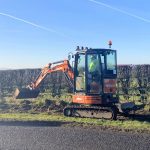The Top Reasons Why UK ADSL Broadband Users Haven’t Upgraded
At present around 96% of UK premises are estimated to be within reach of a so-called “superfast broadband” (24Mbps+) ISP network, yet Ofcom found that superfast connections only accounted for 59% of all fixed broadband lines at the end of 2018. Now a new Which? survey has helped to explain why so many are still on slow copper ADSL lines.
A number of factors are known to impact take-up of faster broadband services, such as a lack of availability, the higher prices for related connections, as well as customers being locked into long contracts with their existing ISP (can’t upgrade immediately) and a lack of general awareness (locals don’t always know that the faster service exists).
Some consumers also have no interest in faster connectivity (if you have a decent ADSL2+ speed and only basic needs then you might feel less inclined to upgrade) and the fear of switching to a different ISP may also obstruct upgrades. In a few cases the new service may also run out of capacity (i.e. demand is higher than expected), which means that people who want to upgrade are prevented from doing so until the problem is resolved.
Advertisement
Which? have now been able to identify 3,000 UK adults who could upgrade but have chosen to stick with a standard broadband connection instead. The survey of this group has helped to give the challenge a bit more context.
General Survey Findings
41% said they’re happy with the speed of their current service.
20% said they don’t use the internet enough to warrant upgrading to fibre.
20% said they didn’t think it would make much difference to the quality of their service (subjective).
8% also said they didn’t think their current provider offers fibre.
8% told us they can’t be bothered to switch.
6% said they didn’t want to risk any downtime in their service.
In terms of awareness and availability, more than a quarter of those who responded to the survey said they weren’t sure whether faster connections were even available where they live and 1 in 5 believed fibre-based broadband to be too expensive. The latter is despite a number of providers now offering superfast packages that are cheaper than some ADSL bundles on other ISPs (Vodafone, Direct Save Telecom, TalkTalk etc.).
Clearly the top issues here stem from a lack of consumer need or desire to upgrade, as well as a lack of awareness about local availability. Tackling the first two could be difficult as you’re dealing with a conscious consumer choice, although we’ve already seen quite a bit of effort being put into improving the third issue – lack of awareness.
One industry change that might help is if Ofcom mandated networks to release more of their coverage data so that sites like ours could more easily build multi-network coverage checkers. As it stands getting even basic availability information out of Virgin Media or Openreach, the two biggest operators, has proven to be a dead end. We’ve found smaller altnet ISPs to be considerably more helpful.
Advertisement
Mark is a professional technology writer, IT consultant and computer engineer from Dorset (England), he also founded ISPreview in 1999 and enjoys analysing the latest telecoms and broadband developments. Find me on X (Twitter), Mastodon, Facebook, BlueSky, Threads.net and Linkedin.
« ISP John Lewis Broadband Discount Prices and Add Google Home Hub


















































Comments are closed